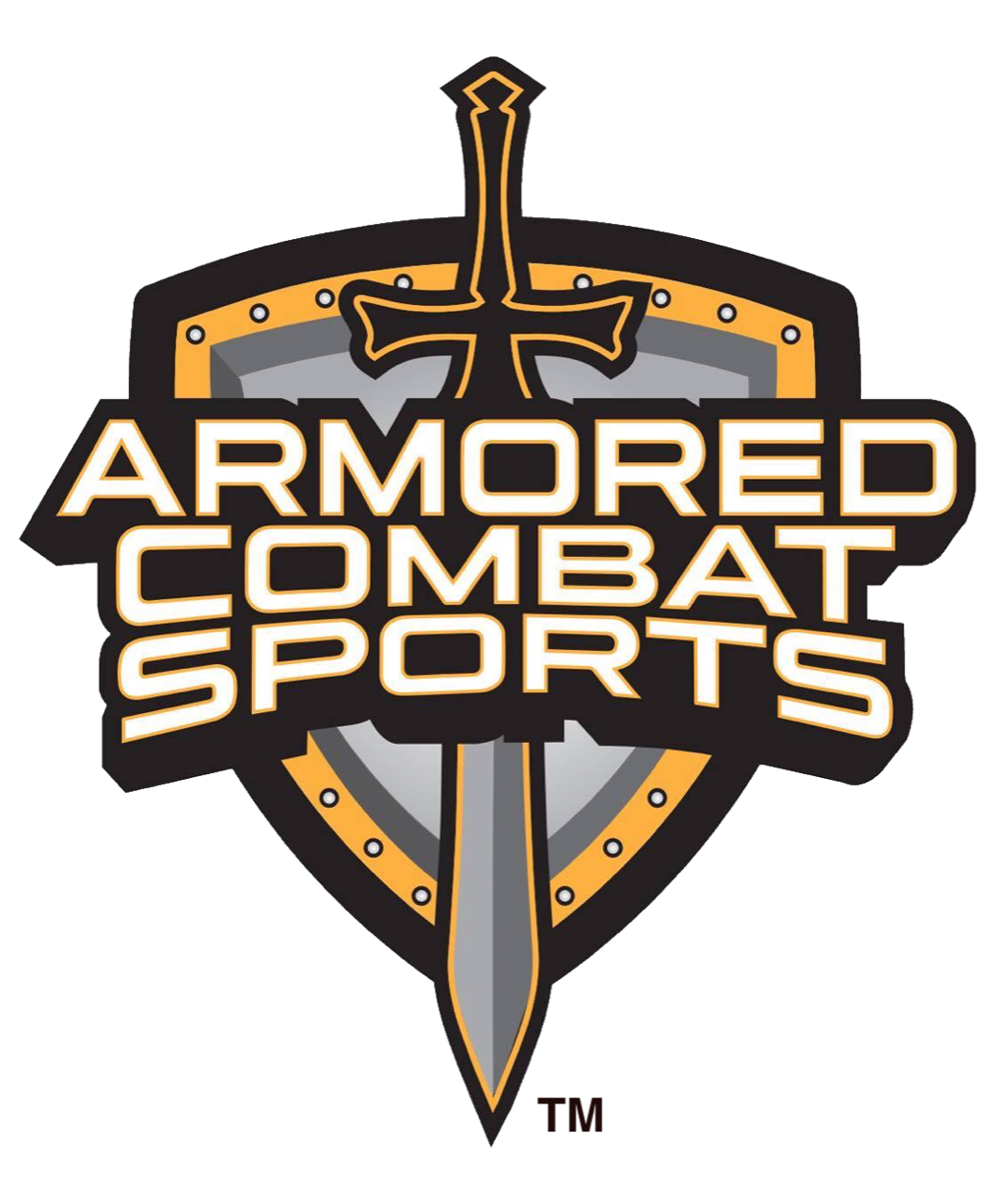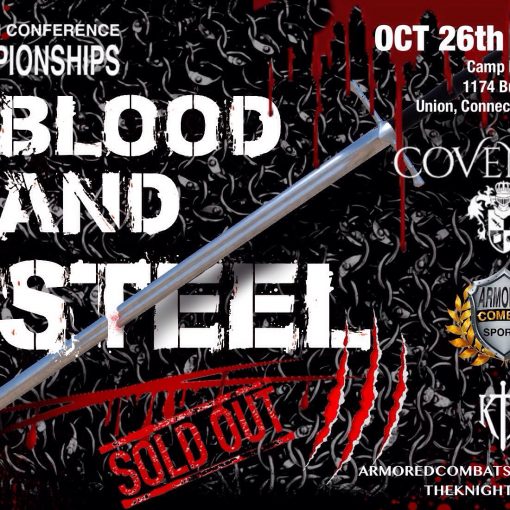Physically, it requires every type of fitness…
strength,
speed,
agility,
balance,
explosive power,
endurance, and
recovery.
Mentally it requires a knowledge of
team tactics,
a cool head,
quick thinking,
and an understanding of measure.
Add to that the learned skills a person needs to succeed;
weapon skill,
striking with fists and feet,
grappling and throws,
how to move in kit,
how to utilize the rail and
team takedowns…
Put these all together and it’s easy to see just how complex this sport is. That complexity is part of the fun, but it is also one of the largest challenges.
Learning and training for the different mental and physical aspects are quite the chore. Naturally, there’s going to be many different philosophies and strategies to prepare for victory. Some will be better than others and at this early point in the sport, it’s hard to figure out which is which.
I’m lucky enough to train with some of the best armored combat fighters in America. I’ve been blessed to watch them evolve in their training as they’ve studied, experimented and applied their knowledge. I believe that the key to their success comes from their continual exploration of strategies and diverse training methods.
However, you can’t just take any variety of training methods and assume one mix is as good as another. There are certain aspects of this sport that are beyond priority, they are simply stated, a prerequisite to being competent. After those fundamentals are covered, attacking the priority skills are next and it’s important that when focusing on them, you make sure you are not just training for them, but training for them correctly. Of course, this is beyond “general” at this point and thus completely useless. I’m not quite ready to give practical “advanced training” advice, yet. We still have some basic concepts to cover.
Training can basically be broken into 4 areas.
(This isn’t the only way of categorizing them, just the one I prefer)
I believe they should be implemented in this order:
- Fitness: Training that’s primarily focused on increasing general physical ability, instead of a specific skill.
- Drills: Focused repetitive movements designed to teach a small number of discrete skills.
- Sparring: A free form method of training to get “a feel for” an actual fight
- Study: This is time spent reading, watching, or thinking about fighting.
It’s totally possible for certain training tools to fit into two or more of these areas and few may fall neatly into one, but each tool will have a certain way it should be used. At its basic level, we can break down the type of training needed and when to implement it.
Fitness:
Muscular Endurance And Recovery
Before anything else, fitness is crucial. Not just strength, speed, or even endurance, but overall fitness. Cardio is king… Not the long slow cardio of a distance runner, but the explosive cardio of a wrestler. You need to have muscular endurance and recovery, because there will be times you are putting out a near 100% physical effort for over a minute, only to start going again 10 seconds later.
Worse than that, your rest is not a real rest. You’re still carrying a minimum of 50 pounds of armor, if not more. For this type of endurance and recovery training, you need intervals, (But not just sprints!) Your interval training needs to be a whole body exercises that work everything… It needs to be a mix of movements that target:
core, shoulders, quads, hamstrings, triceps, pecs, and…well everything. You need all the muscles.
As always, I think the “Knight Fit” workout is one of, if not the best version of these, but the crucial part is that it’s a full body interval workout.
After you have your base fitness down, you may think it’s time to learn to hit things. Nope. Sorry, you’re still not ready for the ultra-violence. Got get your milk first. And by milk I mean agility and balance.
Drills:
Agility and Balance
Moving in armor is not like anything else. Your center of balance is completely different. Your vision is quartered at best and less than a 1/10th in some cases. You need to learn to handle this.
Good starting drills are the tires or ladders at speed, keeping your head up.
From there, add either your helmet or your leg armor… (Not both!) Adding the helmet will get you used to limited vision and breathing. Adding the legs will get you used to movement.
You might think you are ready for sparring here….and you’d be wrong.
It’s time for more drills.
Drills, Drills and more Drills
Now, you don’t have to get to “full kit agility drills”, to start adding, “striking” or “grappling” drills to your training. Most of us end up fighting “in kit” within a month of getting armor, (which can be dangerous). The ability to stay on your feet and keep your balance is key to being useful for your team, (you can’t do anything from the ground can you?) Staying on your feet is also important for protecting yourself from injury. Bad falls are the most common injury in this sport.
As you begin to get into your “violence drills”, falls will become inevitable. You should start with “safe falling drills”. This will help to prevent injury during training and hopefully penetrate into your brain so that while fighting you can fall and land safely in harness.
A Word On Throws
Get yourself a mat and some protective gear and work on one throw. Personally I suggest the hip toss. It’s simple, it can be pulled off in armor without perfect form, and it teaches you how to;
resist being stabilized,
throw without falling, and
how to land safely.
Nope.
There is one more drill, we need to cross off our list.
Basic striking
There are a variety of strikes we use in bohurt;
Punches,
Kicks,
Sword blows,
Axe blows,
Butt Strikes,
knee strikes, (front or side with weapon only)
elbows strikes,
and even head-butts.
When first learning how to strike, I would suggest a basic sword blow and straight punch. A sword blow can easily function as a jab or hook, leaving the straight punch to act as the “2” in the normal
“1-2”, Jab-Cross or “1-2-3” Jab-cross-hook, combo.
It’s also key that you learn to use a weapon, before trying to swing it wildly. For one, you’ll have no power and therefore it’ll be useless, and two, it’s very likely to hurt your elbow or shoulder from throwing blows incorrectly.
“Spend some quality time working on a pell to get your form down.”
Finally, time to spar.
Instead of full harness sparring, I suggest a protective, sturdy and less damaging gear for practice. Boffers, Rattan, wasters, etc for weapons and *plastic or padded armor for protection.
*(see Knights Hall SoftFight gear).
This will allow for the training you need, yet limit the wear on your gear and your body.
~
Quick story.
I went out to New Mexico to see my brother and got a bunch of semi-local people to come spar with me. One of them drove 4 hours, just to fall in full kit and break his ankle. Fast forward 3 months, I’m sparring in soft kit at the knights hall and I throw my opponent. He lands on my ankle and rolls it. The difference? I was more mobile and my opponent wasn’t an extra 50-80 pounds. I’m certain in full kit that same situation I’m out for at least a month. Instead I took 2 days and was back in action.
~
In addition to the safety aspect there are a number of advantages to lighter simulations. One is the ease of putting on and wearing the gear. Putting full kit on takes a half hour at least and every fight is tiring in the extreme. It’s not worth suiting up in full harness to only have one or two matches. If you decide to go for an hour, far more time is spent resting. Lighter kits just let you fight more.
The second advantage is the reduction of difficulty and complexity. Full harness fighting is hard and it always feels like there’s more going on than fighting out of harness. The extra weight, the reduced breathing and vision, the weird articulation, these are all factors that distract you while you’re fighting. It feels faster and more desperate. This is something you will need to get used to and nothing will prepare you like full kit sparring, but full kit sparring will make it much harder to work on new techniques.
The final aspect of training is study. This one is easy. Watch your fights. Watch other people fight. Read about fighting. Watch videos on fighting technique. Try and pick up things from every other fighting sport. Watch melee matches and actively try and break down what gave victory to the winner. Basically, think about fighting as much as possible. The key to this though is that the newer you are to fighting the less faith you give to your ideas. Try and learn from everywhere, but stick to what your teachers are giving you until you become a competent fighter. Once you have a good base you can start to implement all the things you’ve studied.
Summing Up
- It’s important to make sure that first your fitness is on point. All your training will build on this.
- Next begin doing drills, starting with agility and balance drills, before moving to grappling and striking drills.
- You will never really develop good striking if you don’t put in your 10,000 hours. (And that’s done at the pell, not in the lists!)
- If you have drills and fitness in your routine, start adding actual sparring, but don’t go from zero to 60 right out the gate. Limit things and in particular, try to be safe and protect both your gear and your body. (A soft kit will greatly increase quality sparring time.)
- There’s a lot of thinking that sparring is the best way to learn, but it’s far more important you learn to master your individual skills first. (Go back to points 1, 2 & 3)
- Matches, tournaments, and fighting at events will all become just sparring, if you don’t have time to get sparring into your training.
- After you have put all these together, you can start to make insights about fighting and that comes from watching other fights in the ring, critically reviewing your own fights and watching fight videos. When you have a free moment pop onto youtube and pay attention.
Alright, that’s enough ranting for now. Hope to see you in the Lists.













